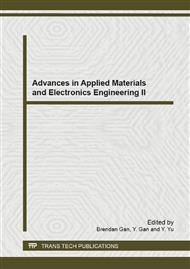[1]
Foster M., Fell R., Spannagle M. (2000): The statistics of embankment dam failure and accidents, Canadian Geotechnical Journal, 37, 1000–1024.
DOI: 10.1139/t00-030
Google Scholar
[2]
Arulanandan K., Perry E.B. (1983): Erosion in relation to filter design criteria in earth dams, Journal of Geotechnical Engineering, 109(5), 682–696.
DOI: 10.1061/(asce)0733-9410(1983)109:5(682)
Google Scholar
[3]
Den Adel H., Bakker K.J., Klein M., Breteler B. (1988): Internal Stability of Minestone, Proceedings of International Symposium on Modelling Soil–Water–Structure Interaction, International Association for Hydraulic Research (IAHR), Delft, 225–231.
Google Scholar
[4]
Khilar K.C., Fogler H.S., Gray D.H. (1985): Model for piping plugging in earthen structures, Journal of Geotechnical Engineering, 111(7), 833–846.
DOI: 10.1061/(asce)0733-9410(1985)111:7(833)
Google Scholar
[5]
Terzaghi K., Peck R.B., Mesri G. (1996): Soil mechanics in engineering practice, Third Edition John Wiley & Sons Inc. Publishers.
Google Scholar
[6]
Vardoulakis I., Papamichos E. (2001) : A continuum theory for erosion in granular media, Actes de la journées scientifique internationale (Cermes 21), Paris, 41–60.
Google Scholar
[7]
Kenney T.C., Lau D. (1985): Internal stability of granular filters, Canadian Geotechnical Journal, 22, 215–225.
DOI: 10.1139/t85-029
Google Scholar
[8]
Skempton A.W., Brogan J.M. (1994): Experiments on piping in sandy gravels, Géotechnique, 44(3), 440–460.
DOI: 10.1680/geot.1994.44.3.449
Google Scholar
[9]
Monnet A. (1998) : Boulance, érosion interne, renard. Les instabilités sous écoulement, Revue Française de géotechnique, 82, 3–10.
DOI: 10.1051/geotech/1998082003
Google Scholar
[10]
Lafleur J. (1999): Selection of géotextiles to filter broadly graded cohesionless soils, Geotextiles and Geomembranes, 17, 299–312.
DOI: 10.1016/s0266-1144(99)00007-2
Google Scholar
[11]
Wan C.F., Fell R. (2004): Laboratory tests on the rate of piping erosion of soils in embankment dams, Geotechnical Testing Journal, 27(3), 295–303.
DOI: 10.1520/gtj11903
Google Scholar
[12]
Bernoulli D. (1738): Hydrodynamica, sive de Viribus et Motibus Fluidorum commentarii. Opus Academicum, First edition Dulsecker Publishers.
DOI: 10.14711/spcol/b495264
Google Scholar


